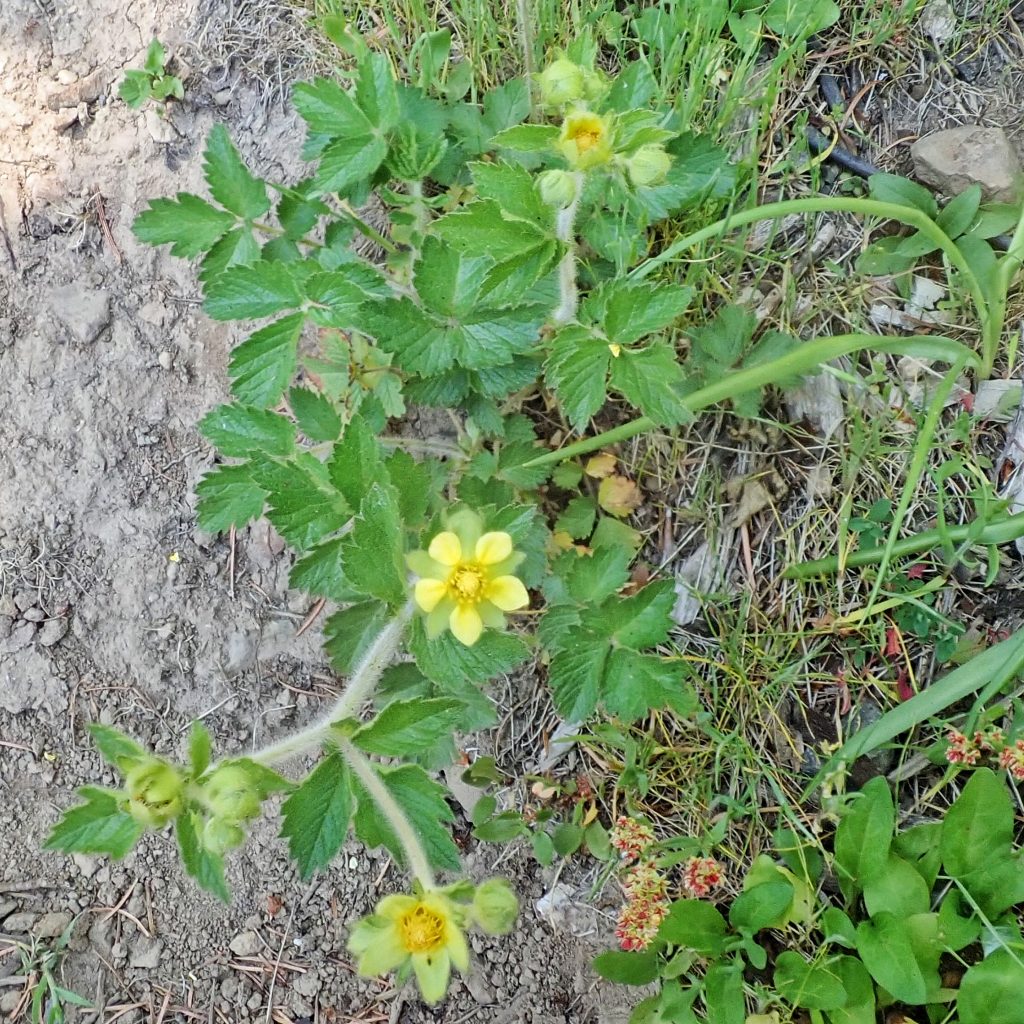
In the last decade the combination of morphological and genetic evidence has indicated that several of our cinquefoils (family Rosaceae) did not really fit within the genus Potentilla, and were actually more closely allied with Fragaria (strawberries). To that end the genus Drymocallis has been resurrected to accommodate them. But things are never that simple, and studies and revisions within that genus are in progress.
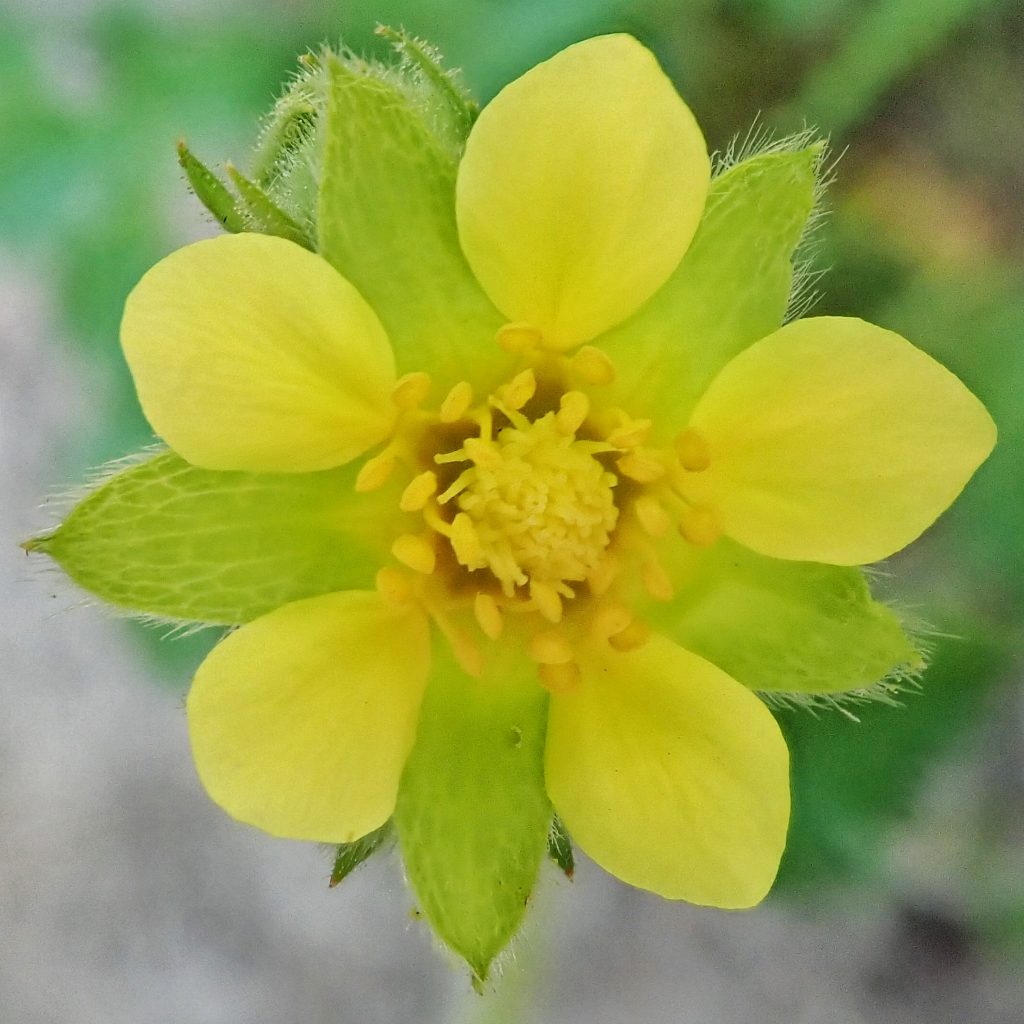
According to the key in the 2nd edition of ‘Flora of the Pacific Northwest’ (Hitchcock/Cronquist et al; 2018), the plants shown here are Drymocallis glandulosa. But other taxonomies have been proposed, such as the treatment in ‘Flora of North America’ (vol 9; 2015), and it looks like volume 3 of ‘Flora of Oregon’ will be proposing a taxonomy that both adds (via elevation to full species status) and subtracts (because of range exclusions) species of Drymocallis for the region. So I have no idea what this will end up being called.
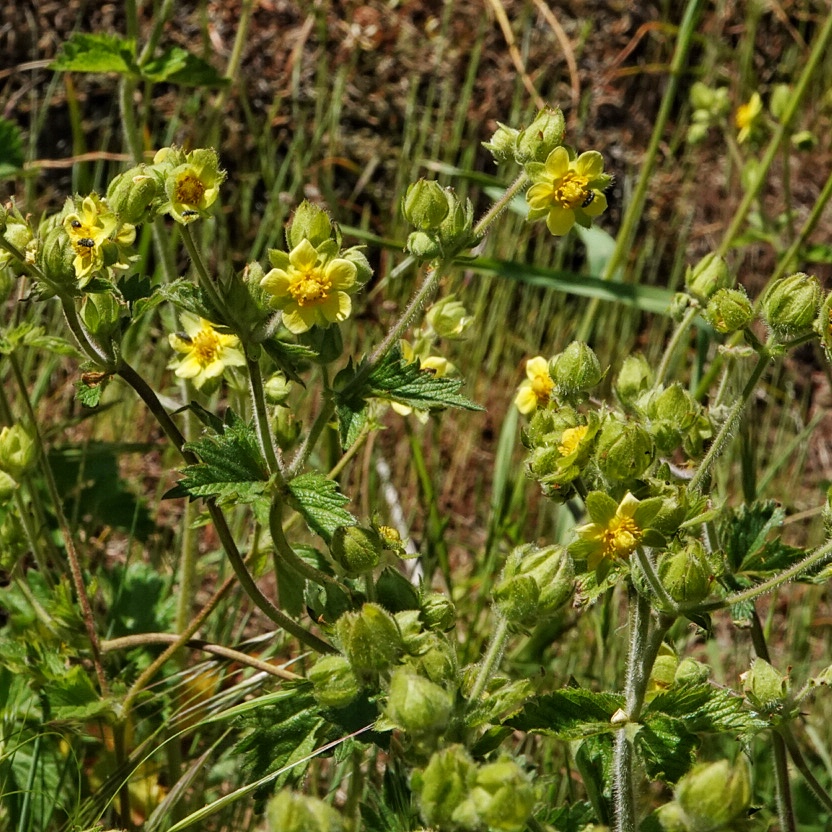
For now it is still sticky cinquefoil (Drymocallis glandulosa). I see Douglas’ cinquefoil listed in a couple places as a secondary common name, but I don’t know if that is specific to a subspecies or variation. Some of the reasons that the genus Drymocallis is seeing so much change include the facts that apparently species hybridize fairly easily, there is tremendous variation within a given species depending on the environment and conditions in which it is found, and their is much intergrading between subspecies. For a more complete discussion I recommend the species and genus treatments for this plant in Flora of North America.
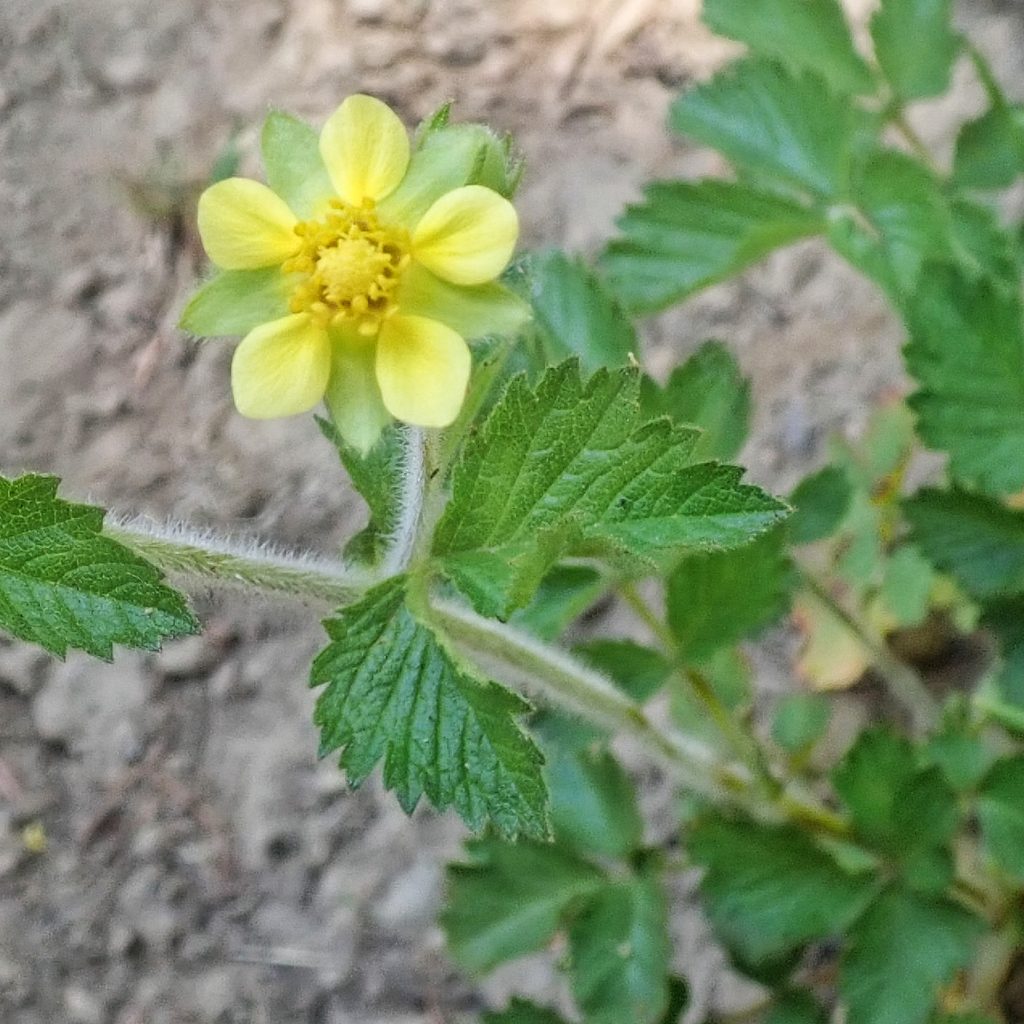
Something fascinating that I just learned is that this plant is what they call protocarnivorous. The sticky glandular hairs do trap and kill insects, but there is doubt as to whether it has fully evolved a method for digesting them. A closely related species, Drymocallis arguata, has been shown to be able to digest and absorb certain algal proteins that were placed on it experimentally, but whether the enzymes necessary to do so came from the plant or from microbial colonies on the surface could not be determined. It is also interesting to note that none of the beetles, true bugs, or lepidoptera that are known to utilize the ‘non-stick’ Potentilla as a larval host seem to use members of Drymocallis. So it appears that, even apart from any nutritional benefit, the stickiness of the glands provides a defense against predation, although it didn’t seem to slow down the dozens of Listrus sp. we found on the flowers.
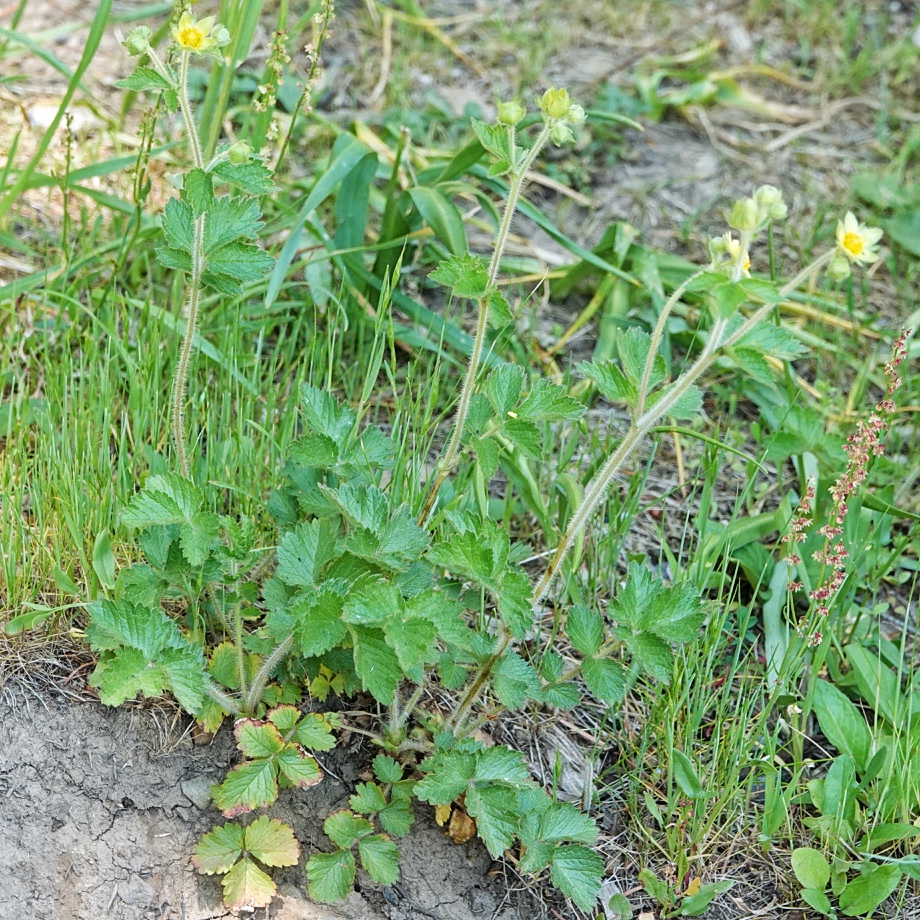
Sticky cinquefoil doesn’t seem to have had much use as a foodstuff, although tea has been made from the leaves or whole plant. Some indigenous cultures utilized various parts of the plant as an astringent to control minor bleeding. It was also used to control swelling, both as a poultice and as an infusion to be consumed, and the infusion was drunk as a stimulant or tonic.
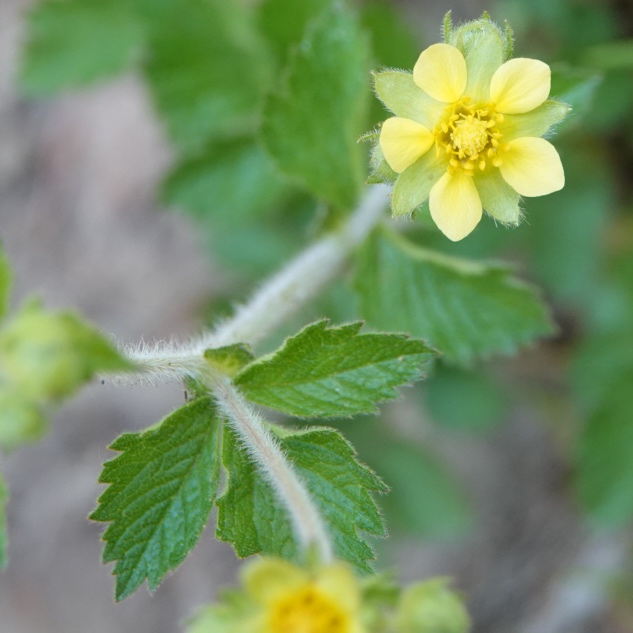
Description-Medium sized (1-3’ tall) perennial plant with cream to yellow flowers; basal leaves divided in 5-9 deeply dissected leaflets, with the terminal leaflet the largest; hairy plant with hairs ending in glands; stem leaves alternate, few, much smaller than basal leaves; branched inflorescences; petals may be shorter or longer than sepals, spreading to mildly reflexed; anthers are single chambered, with a single split running along the margin and over the top.
Similar species–Potentilla spp. have a two chambered anther with vertical splitting; D. arguata, D. companylata have erect petals and sepals; differentiation amongst other Drymocallis spp. requires a key.
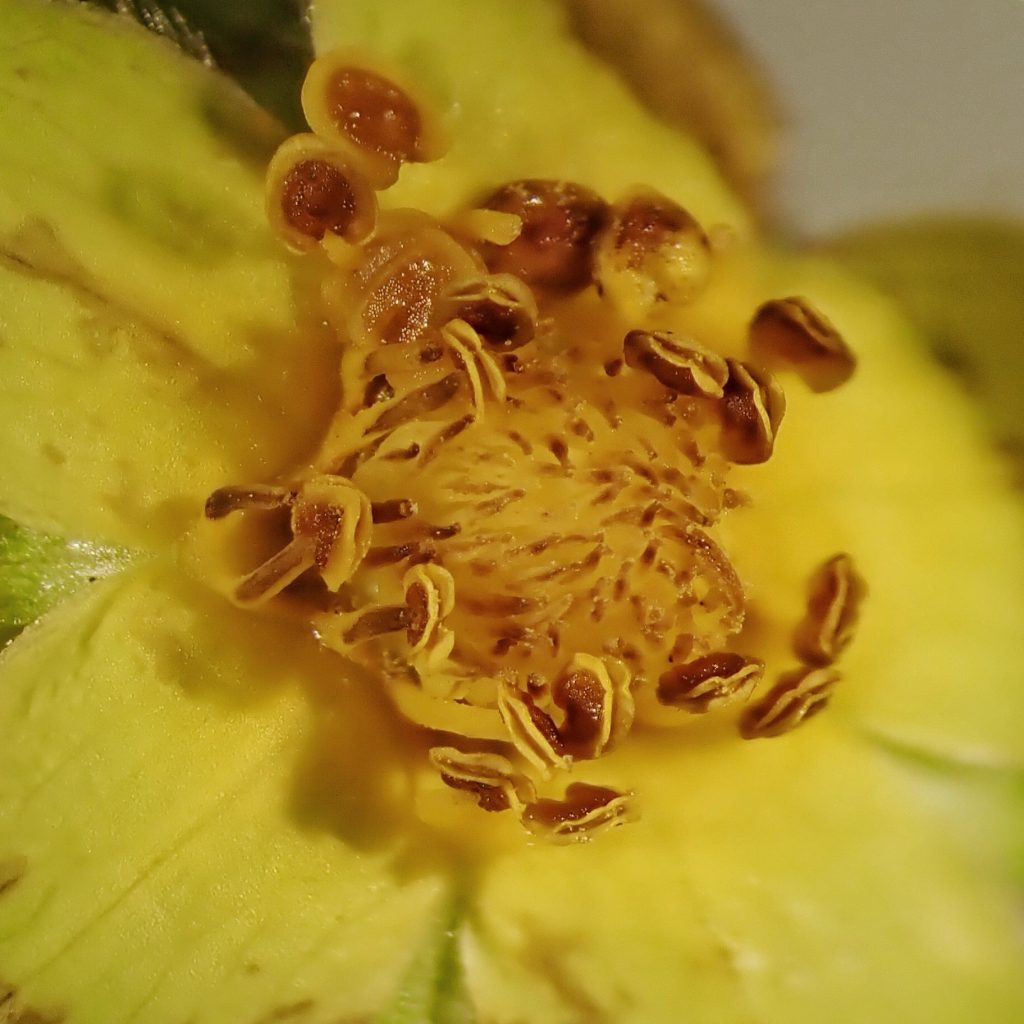
Habitat-Mesic forest openings and meadows to 6,000’
Range-Western North America; region wide in appropriate habitat
Reproductive timing-Blooms May to August
Eaten by-Though there are several species of leaf beetles, true bugs, and lepidoptera that feed on Potentilla, I can’t find any records of that for this species; Listrus spp., and probably other members of Dasytinae, as well as numerous other nectar/pollen feeders, are frequent visitors.
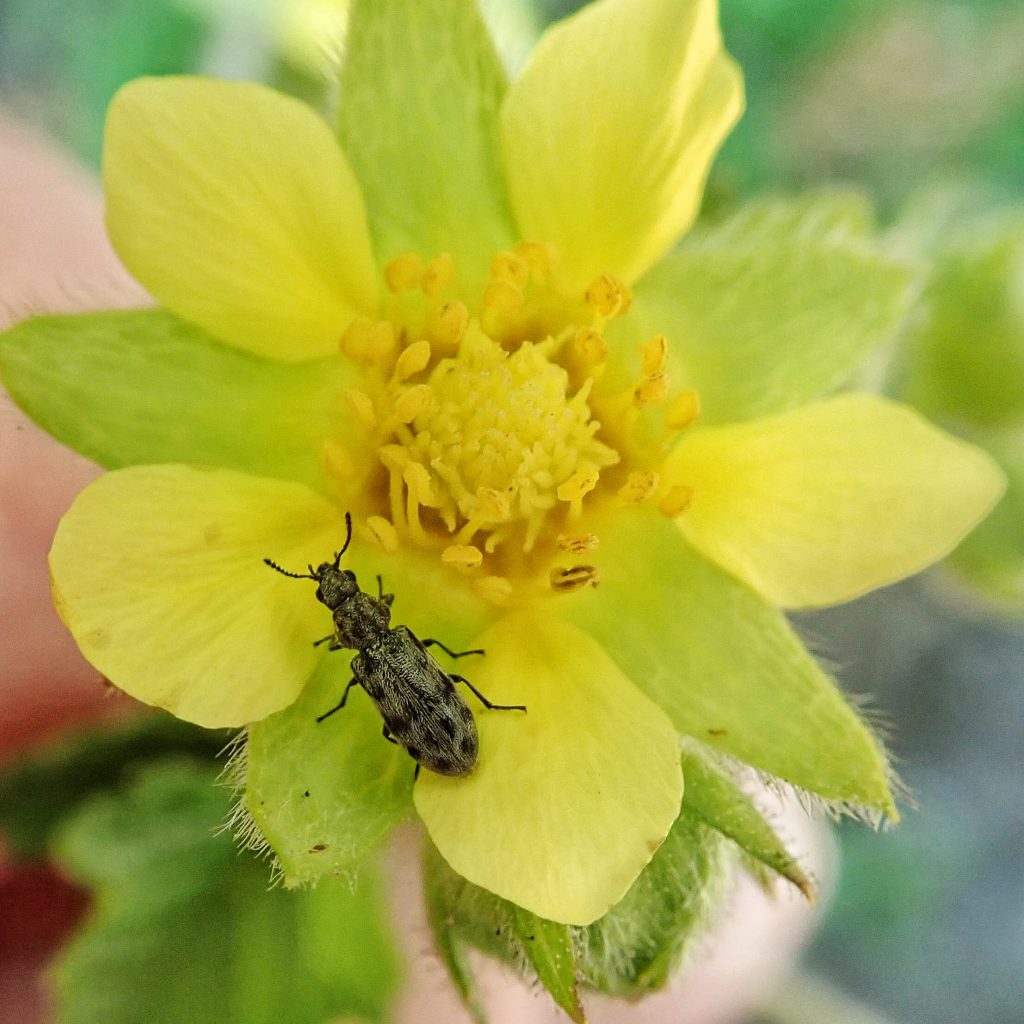
Etymology of names–Drymocallis is from the Greek for ‘woods beauty’, a fitting appellation for these plants. The specific epithet glandulosa is from the Latin for ‘of the gland’ and refers to all of the glands which secrete the substance that makes this a ‘sticky’ cinquefoil. The common name cinquefoil comes from the five spread petals. A cinquefoil emblem was used in heraldry as a sign of strength, power, honor, and loyalty.
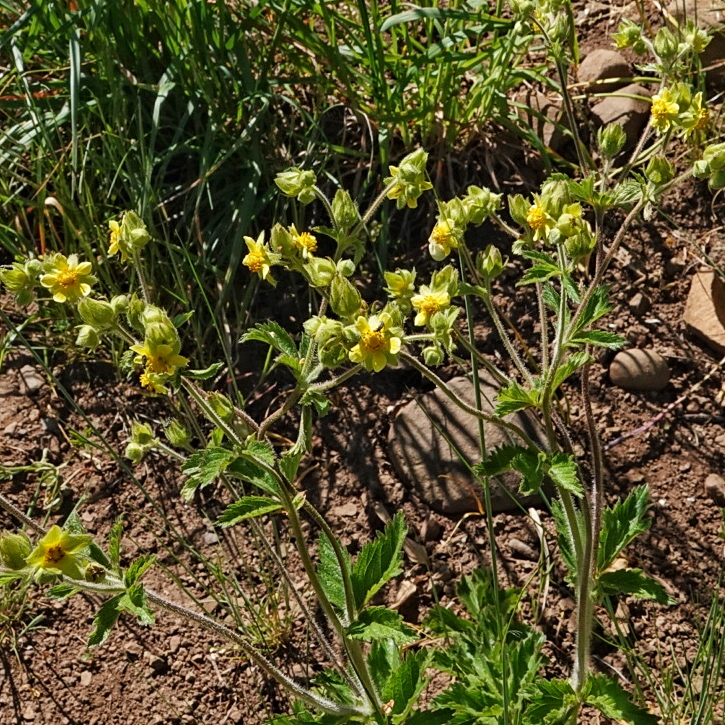
Potentilla glandulosa | Sticky Cinquefoil | Wildflowers of the Pacific Northwest
http://www.efloras.org/florataxon.aspx?flora_id=1&taxon_id=250100215
http://www.efloras.org/florataxon.aspx?flora_id=1&taxon_id=110974
http://naeb.brit.org/uses/species/3127/
https://en.m.wikipedia.org/wiki/Protocarnivorous_plant
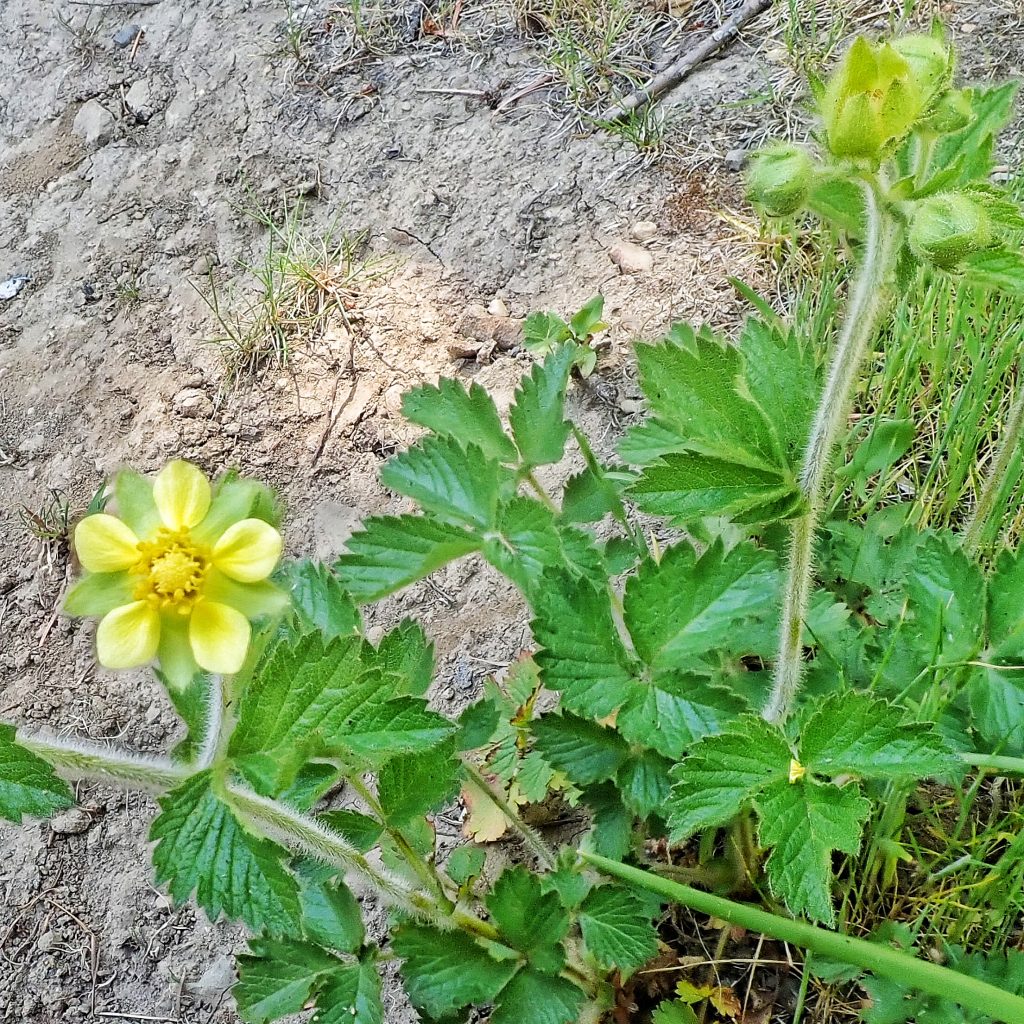
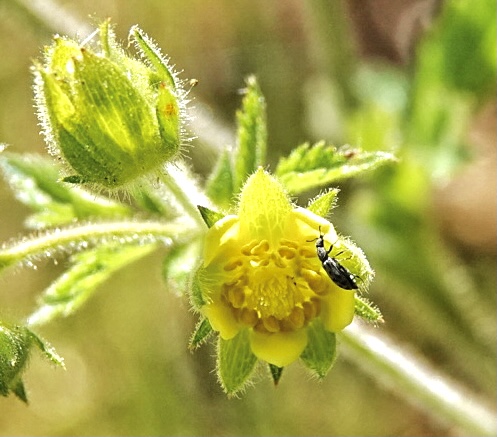
Really enjoyed this! Interesting & a beautiful flower! Thank you ☺️